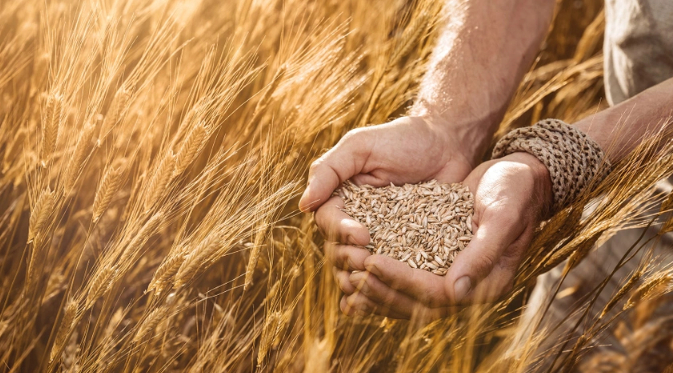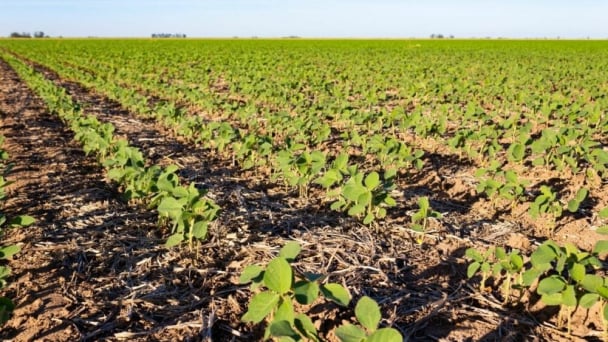May 17, 2025 | 02:59 GMT +7
May 17, 2025 | 02:59 GMT +7
Hotline: 0913.378.918
May 17, 2025 | 02:59 GMT +7
Hotline: 0913.378.918

ANCIENT EINKORN: This ancient wheat variety, considered the oldest cultivated wheat, has a distinctive nutty flavor and a chewy texture. Einkorn flour is often used to make rustic breads and pasta with a slightly denser texture than modern wheat varieties.
What’s old is new again!
As happens frequently in the fashion world, food trends tend to be cyclical and recyclable over a period of time. I find this slightly fascinating, both in fashion and food. But today I’ll focus on food.
History tells us that humanity has relied on a rich tapestry of crops to nourish our civilizations. However, with the rise of industrialized agriculture in the 1900s and a continued focus on consumer convenience, product consistency and high-yield monocultures, many ancient grains, legumes and vegetables faded into obscurity.
Recently, though, there’s been a shift toward diversification to “heritage" or “ancient” diets. This is leading to a comeback of some forgotten crops.
The return of these forgotten foods is driven by a confluence of factors.
One is the growing interest in healthy, nutrient-dense foods. Ancient grains such as quinoa and amaranth boast a complete protein profile, containing all nine essential amino acids that our bodies can’t synthesize on their own.
Additionally, legumes such as fava beans and lentils are rich in fiber and protein, making them excellent options for vegetarians and vegans.
Another reason for the resurgence is growing awareness of food sustainability. Many ancient crops are naturally drought-tolerant and require minimal inputs such as fertilizers and pesticides. This makes them ideal for regions facing water scarcity or for farmers seeking more environmentally friendly practices. Additionally, the biodiversity these crops introduce can help improve soil health and promote beneficial insects.
Finally, the culinary world is embracing these ancient grains and vegetables. Chefs are experimenting with incorporating them into dishes, showcasing their versatility and unlocking a world of culinary possibilities.
Here are a few crops that have seen a resurgence:
Quinoa. This protein-packed grain, native to the Andes, was a staple food for the Incan Empire. Quinoa offers a slightly nutty flavor and a fluffy texture when cooked.
According to the Oldways Whole Grains Council, “Chief growing areas for the world’s quinoa crop are in Peru and Bolivia, with Ecuador, Colombia and Argentina represented to a lesser degree.”
Spelt. This ancient wheat, cultivated for more than 7,000 years, boasts a slightly sweet and nutty flavor with a chewy texture. Spelt flour can be used to make breads, pastas and even pancakes.
Fava beans. These broad beans, cultivated in the Mediterranean region since ancient times, have a creamy texture and a slightly earthy flavor. Fava beans can be enjoyed fresh, shelled and boiled, or dried and ground into a delicious dip.
Fava beans can be great in stews, soups, salads, dips and more. They are available for a limited time in late spring through early fall.
Einkorn. This ancient wheat variety, considered the oldest cultivated wheat, has a distinctive nutty flavor and a chewy texture. Einkorn flour is often used to make rustic breads and pasta with a slightly denser texture than modern wheat varieties.
Here’s some insight on growing einkorn from Jovial Foods, a company that creates products from the crop: “In 2008, Carla and Rodolfo teamed up with an organic farmer just a few minutes from their home in Northern Italy, to grow the first 50 acres of einkorn wheat. Einkorn was new to them and farmer Stefano, and they were both worried and delighted to see how differently it grew. Einkorn yields a fifth of modern wheat and reaches above 5 feet tall by the harvest in late July. Carla took the first einkorn seeds to an experienced miller who thought they were too small to contain much flour, but he was wrong. Rodolfo slowly brought on board new farmers in different regions because it was too risky to grow such a rare grain in the same area, especially with changing weather patterns. Each of the initial years was a learning experience, but through trial and error they determined how many seeds to plant per acre and the right timing for planting and harvest.”
The comeback of these ancient crops represents more than just a culinary trend. It signifies a shift toward a more sustainable and diverse food system.
By embracing these forgotten treasures, we not only unlock a world of flavor and nutrition, but also reconnect with our agricultural heritage and pave the way for a more resilient food future. So, the next time you browse the grocery store shelves, keep your eyes peeled for these ancient grains and vegetables. You might just be surprised by the delicious history hidden within each bite.
FP

(VAN) Fourth most important food crop in peril as Latin America and Caribbean suffer from slow-onset climate disaster.

(VAN) Shifting market dynamics and the noise around new legislation has propelled Trouw Nutrition’s research around early life nutrition in poultry. Today, it continues to be a key area of research.

(VAN) India is concerned about its food security and the livelihoods of its farmers if more US food imports are allowed.

(VAN) FAO's Director-General emphasises the need to work together to transform agrifood systems.

(VAN) Europe is facing its worst outbreak of foot-and-mouth since the start of the century.

(VAN) The central authorities, in early April, released a 10-year plan for rural vitalization.

(VAN) Viterra marked a significant milestone in its carbon measurement program in Argentina, called Ígaris, reaching 1 million soybean hectares measured.